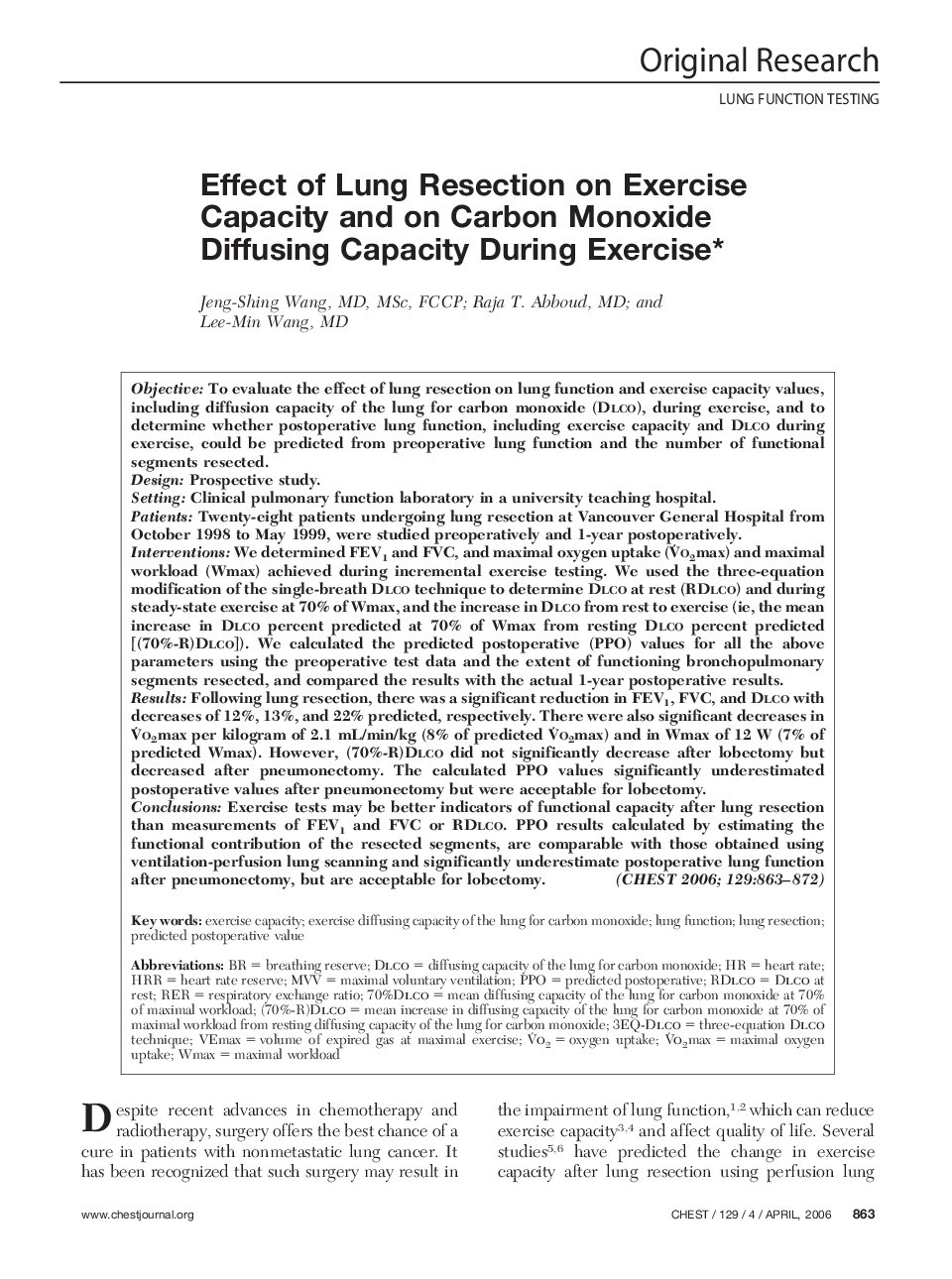| Article ID | Journal | Published Year | Pages | File Type |
|---|---|---|---|---|
| 2905579 | Chest | 2006 | 10 Pages |
ObjectiveTo evaluate the effect of lung resection on lung function and exercise capacity values, including diffusion capacity of the lung for carbon monoxide (Dlco), during exercise, and to determine whether postoperative lung function, including exercise capacity and Dlco during exercise, could be predicted from preoperative lung function and the number of functional segments resected.DesignProspective study.SettingClinical pulmonary function laboratory in a university teaching hospital.PatientsTwenty-eight patients undergoing lung resection at Vancouver General Hospital from October 1998 to May 1999, were studied preoperatively and 1-year postoperatively.InterventionsWe determined FEV1 and FVC, and maximal oxygen uptake (Vo2max) and maximal workload (Wmax) achieved during incremental exercise testing. We used the three-equation modification of the single-breath Dlco technique to determine Dlco at rest (RDlco) and during steady-state exercise at 70% of Wmax, and the increase in Dlco from rest to exercise (ie, the mean increase in Dlco percent predicted at 70% of Wmax from resting Dlco percent predicted [(70%-R)Dlco]). We calculated the predicted postoperative (PPO) values for all the above parameters using the preoperative test data and the extent of functioning bronchopulmonary segments resected, and compared the results with the actual 1-year postoperative results.ResultsFollowing lung resection, there was a significant reduction in FEV1, FVC, and Dlco with decreases of 12%, 13%, and 22% predicted, respectively. There were also significant decreases in Vo2max per kilogram of 2.1 mL/min/kg (8% of predicted Vo2max) and in Wmax of 12 W (7% of predicted Wmax). However, (70%-R)Dlco did not significantly decrease after lobectomy but decreased after pneumonectomy. The calculated PPO values significantly underestimated postoperative values after pneumonectomy but were acceptable for lobectomy.ConclusionsExercise tests may be better indicators of functional capacity after lung resection than measurements of FEV1 and FVC or RDlco. PPO results calculated by estimating the functional contribution of the resected segments, are comparable with those obtained using ventilation-perfusion lung scanning and significantly underestimate postoperative lung function after pneumonectomy, but are acceptable for lobectomy.
